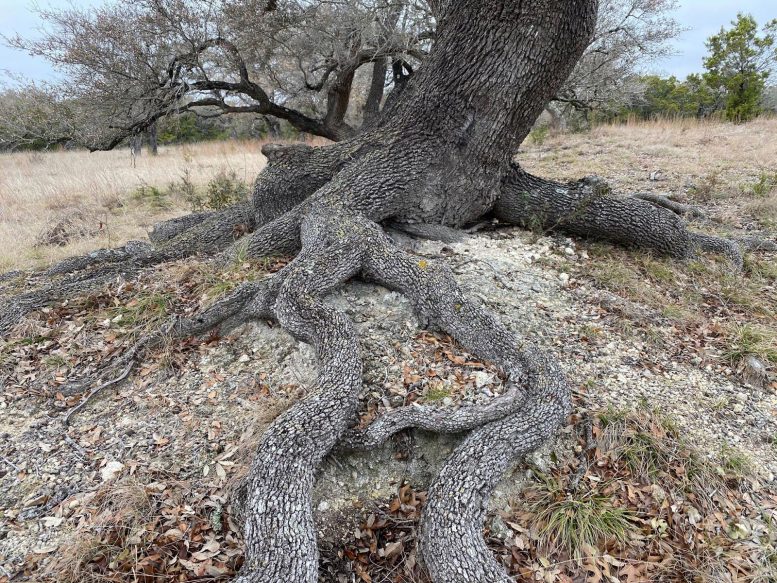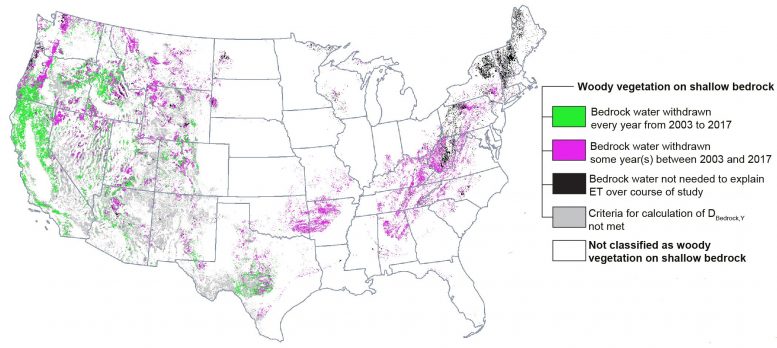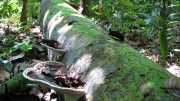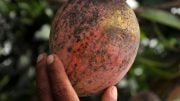
Oak tree rooting into bedrock at the Jackson School’s White Family Outdoor Learning Center. Credit: Erica McCormick
You can’t squeeze water from a rock. But tree roots can — and they’re doing it more frequently than scientists previously thought, with a new study finding that bedrock is a regular source of water for trees across the United States, not just an emergency reserve during droughts.
The discovery, led by researchers with The University of Texas at Austin and published on September 8, 2021, in Nature, overturns long-held assumptions about where trees get their water and is leading to new ideas about how forest ecosystems function. It also demonstrates the necessity of accounting for rock moisture — the water clinging to cracks and pores in underground rocks — when making predictions about how forests will respond to climate change.
“With droughts intensifying, bedrock could be as key to understanding our forests as soils,” said study co-author Daniella Rempe, an assistant professor at the UT Jackson School of Geosciences.

The spatial extent of annual bedrock water withdrawal by woody plants in the continental United States. Colored areas encompass the extent of woody vegetation where bedrock is encountered within the upper 1.5 meters. This area is divided into four colors corresponding to bedrock water withdrawal. Areas in green were tapped each year of the study; Areas in pink were tapped some years; Areas in black do not need to have been tapped to explain tree water usage; and areas in gray were excluded from the study. Credit: McCormick et al.
Erica McCormick, a research assistant in the Rempe lab who conducted the research as a Jackson School undergraduate, led the study.
For more than a century, scientists around the world have been documenting trees’ rooting into bedrock. But these roots have largely been treated as a curiosity, with scientists considering soil the de facto source of water for most trees, Rempe said. And although experiments at field sites have provided direct evidence of trees tapping rock moisture and relying on it during droughts, questions remained about how extensive this phenomenon may be.
By combining public data sets that tracked precipitation and evaporation in forests from 2003 to 2017 with field studies in Texas and California, the researchers found that trees tapping bedrock is far from rare: It’s happening across the country, with the scientists detecting the behavior in about 24% of forests and shrubland — an area greater than the size of Texas.

Lead author Erica McCormick led the research as an undergraduate student at The University of Texas at Austin Jackson School School of Geosciences. McCormick collaborated with Assistant Professor Daniella Rempe, in addition to other scientists. Credit: Erica McCormick
The research presents a conservative estimate of bedrock water used by forests. Rempe estimates that overall the actual extent and amount of rock tapping to potentially be double what’s presented in the study.
Susan Schwinning, a professor at Texas State University who was not involved with the research, said that the study is a huge leap in knowledge, proving what was once thought of as atypical behavior to be essential.
“It’s taken 100 years to come from this anecdotal evidence — oh wow, tree roots can actually go that deep — to understanding that this is probably, in many places, an important part of defining ecosystem dynamics,” she said.
In addition to demonstrating that trees commonly tap roots into bedrock water stores, the study shows that trees are moving large volumes of water. In California alone, the amount of bedrock water taken up by forests each year exceeds the capacity of all of the state’s human-made reservoirs.
In addition to providing a cross-country view, the study presents data from individual field sites in Central Texas and California showing that rock moisture can outdo soil as a water source. For example, at six sites in California and two in Central Texas, more than 50% of water released by trees came from rock moisture. At most of these sites, the rocks held significantly more water than soil did — up to 10 times as much.
Although it’s clear that rock moisture plays a critical role in sustaining forests, McCormick said that much more research is needed to know how and when trees access water locked away in rocks.
“We have much left to explore,” she said. “We have tools for investigating and describing soil processes, but we need data and experiments to tell us how to treat bedrock.”
Reference: “Widespread woody plant use of water stored in bedrock” by Erica L. McCormick, David N. Dralle, W. Jesse Hahm, Alison K. Tune, Logan M. Schmidt, K. Dana Chadwick and Daniella M. Rempe, 8 September 2021, Nature.
DOI: 10.1038/s41586-021-03761-3
The study was co-authored by Jackson School graduate students Alison Tune and Logan Schmidt and Jackson School research scientist Dana Chadwick, along with David Dralle, a research hydrologist with the U.S. Forest Service Pacific Southwest Research Station, and Jesse Hahm, an assistant professor at Simon Fraser University.









Be the first to comment on "Water in Bedrock Is Sustaining Trees Across Country – Long-Held Assumptions About Where Trees Get Their Water Overturned"